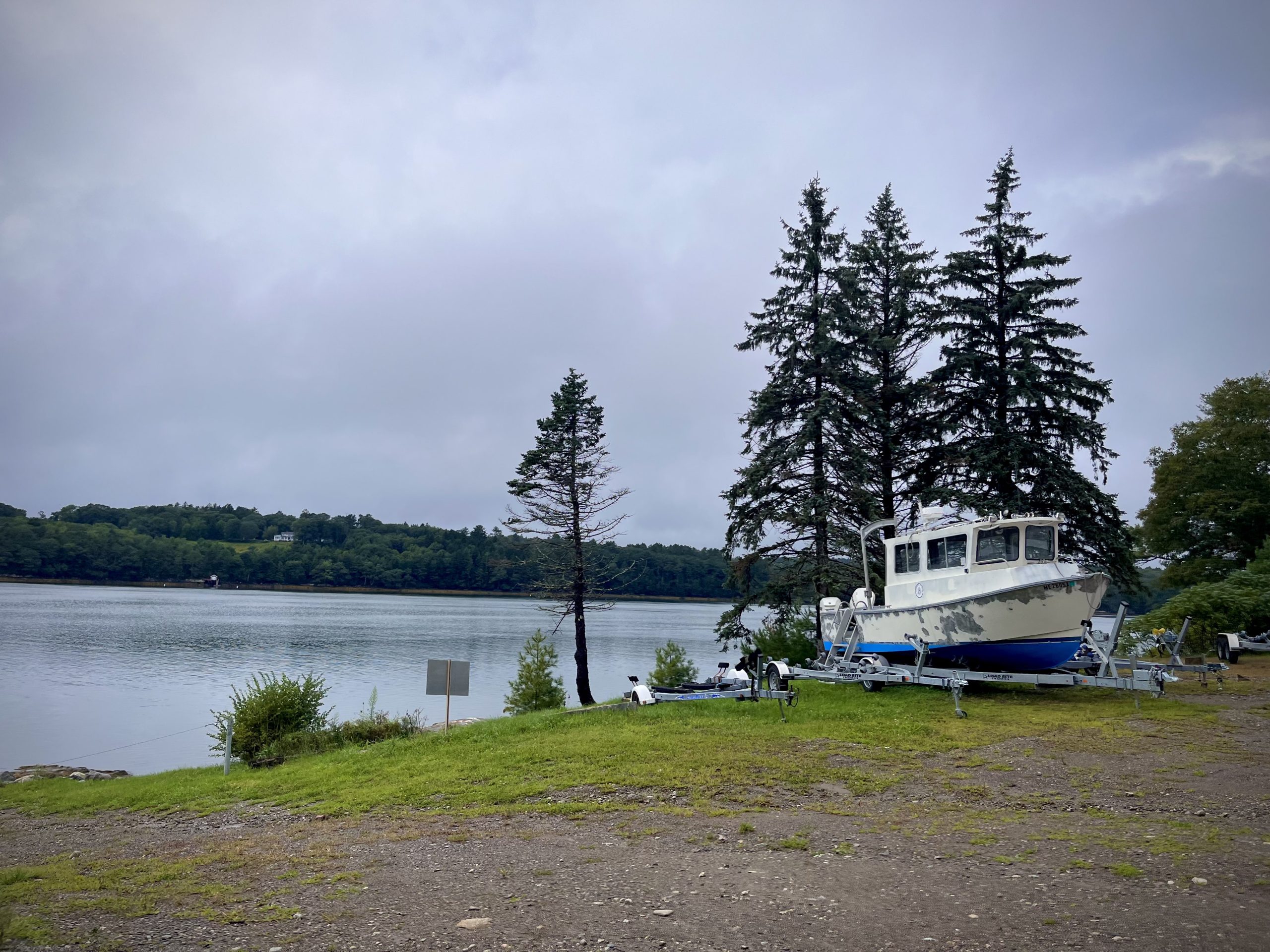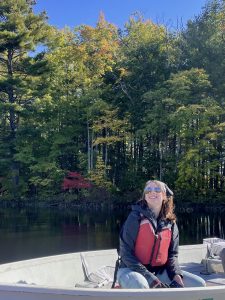
Navigating Offshore Wind in the Gulf of Maine

Author: Rachel Manuela Elsa Hale served as the Maine Offshore Wind Research Consortium Development Intern from May 2023 through October 2023, working with Maine Sea Grant staff and staff from the Maine Governor’s Energy Office (GEO) to provide support for the Maine Offshore Wind Research Consortium. Rachel continues to add capacity to our Maine Sea Grant team by engaging in and learning from a wide variety of ocean renewable energy (ORE)-related meetings, workshops, and public engagement processes throughout the Northeast region. Rachel is a graduate student in the Department of Anthropology and a trainee in the National Research Traineeship program in Conservation Science at the University of Maine.
I knew very little about offshore wind in the beginning of 2023. Like many academics with a background in climate change issues I recognized both solar and wind energy technologies as essential pieces of the transition away from burning carbon fuels, but I only had a vague idea about what wind energy would look like in practice, particularly in my home state of Maine. With the strong, consistent winds regularly found blowing over the Gulf of Maine and their proximity to the large population centers on the Northeast coast, it seems like an easy place to decide to put a wind farm or two. As usual, it turns out to be more complicated than that.
Maine’s relationship to offshore wind began in about 2008, when The Advanced Structures and Composites Center at the University of Maine began working on designing, building, and testing floating platform technology: a design where a wind turbine is stationed atop a platform, suspended in the ocean, and anchored to the seafloor by tethers. Since then, a handful of offshore wind projects have been successful in Europe and off the coast of other US states (currently Rhode Island and Virginia, with others in various stages of development), and the need for renewable energy development has become increasingly urgent as climate emergencies mount.
The Biden administration has set ambitious national offshore wind deployment targets of 30 gigawatts of offshore wind energy by 2030, and several other states have set their own goals as part of their strategies to decarbonize their electric grid. In 2021, The Maine Offshore Wind Research Consortium was created by the Maine State Legislature to bring stakeholder engagement and scientific expertise to this potential new industry. My role as the Maine Offshore Wind Research Consortium Development Intern, facilitated through Maine Sea Grant and a cooperative agreement with the Governor’s Energy Office (GEO), was established in early 2023 to provide administrative support for the project managers of the Research Consortium and to increase Maine Sea Grant’s capacity to interact with the offshore wind scene more broadly.
Over the course of my 6-month internship, the Research Consortium’s advisory board of interested parties and experts met repeatedly to identify research questions and prioritize them by importance and urgency, with the goal to fund research into answering those questions by issuing a Request for Proposals. My responsibilities included assisting in facilitating both in-person and remote meetings, taking detailed notes during discussion, and learning about the topic from every angle — from wind turbine technology to environmental science and what the implications might be for Mainers — and report what I learned to my colleagues at Maine Sea Grant. Becoming familiar with the relevant state and federal processes, learning how to effectively build relationships with communities by listening and engaging, and understanding how important it is to design and conduct research that is both practically useful and socially conscious was an invaluable experience.
Optimistically, an offshore wind industry could be a new source of energy for coastal New England towns and cities, diversify coastal economies, and bring in more tax revenue to the state. However, a new industry inevitably brings disruptions. Questions abound: Will fishing activities be feasible in and around the wind farms? What impact will wind farms have on wildlife? Is there a possibility of disrupting submerged and coastal Wabanaki tribal artifacts or archeological sites? What of the social, cultural, and economic implications for the coastal communities that sit adjacent to any new infrastructure, such as ports or cable landing sites? These are the sorts of questions that are being seriously considered.
The most important thing I have come to understand through this experience is that the Gulf of Maine is not just an ocean ecosystem, it is also a social one. Human activities — whether they be shipping, fishing, lobstering, scientific study, conservation, or leisure — currently coexist, navigating their relationships through complex networks of legal and social understanding. Introducing a new industry will require the adjustment of the full web, the building of new relationships, and a new establishment of legal and social norms for the communities who live and work on the water. This cannot be done without the involvement of — and more crucially, the consent of — the Maine people whose food, livelihood, way of life, and identity are derived directly from their relationship with the sea. They are the ones most sensitive to its nuances and its ebbs and flows, and they are the experts on what is beneficial for, or harmful to, the complex social and ecological matrix that the rest of the world knows simply as “The Gulf of Maine.”
Posted 28 February 2024
